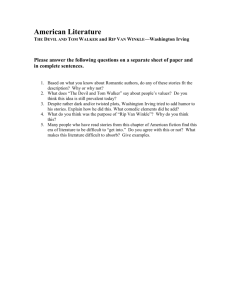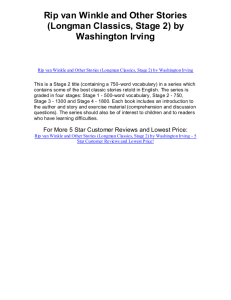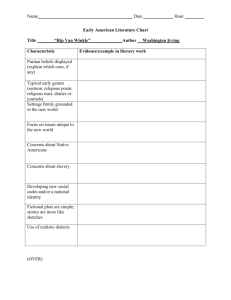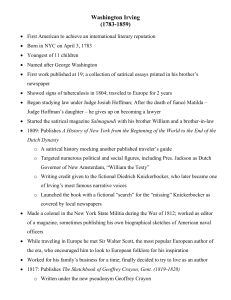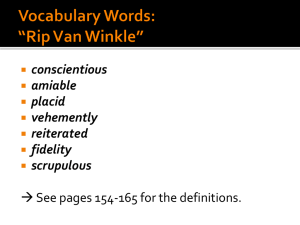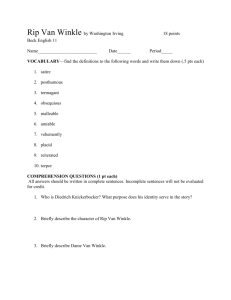Day 1 - Soar North Country
advertisement
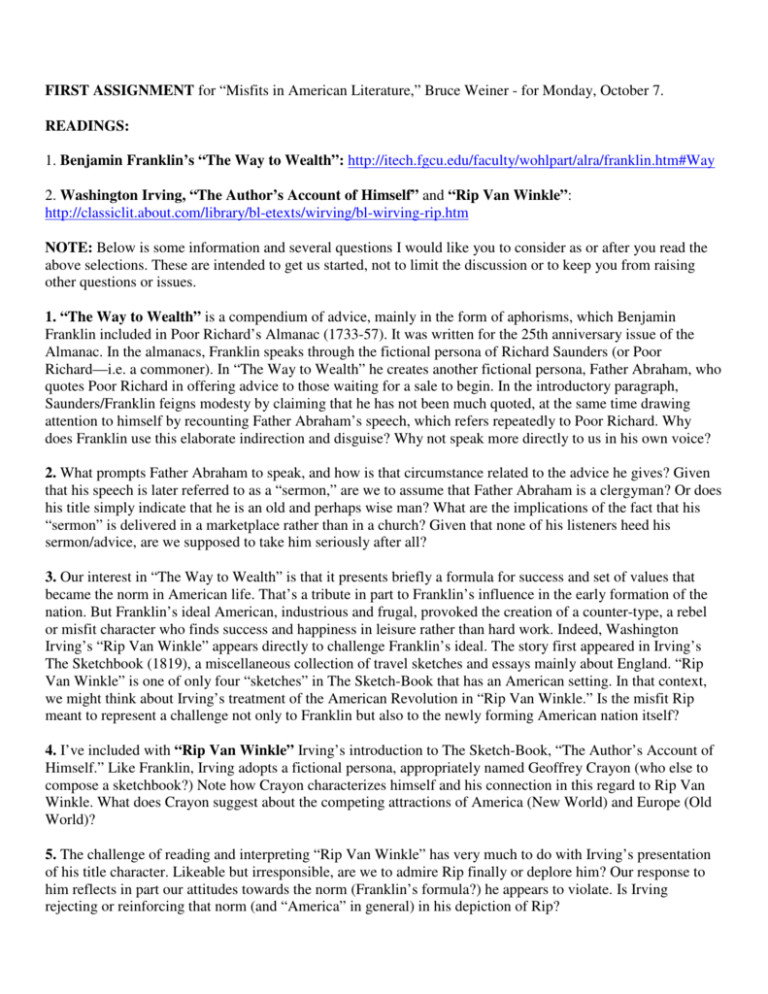
FIRST ASSIGNMENT for “Misfits in American Literature,” Bruce Weiner - for Monday, October 7. READINGS: 1. Benjamin Franklin’s “The Way to Wealth”: http://itech.fgcu.edu/faculty/wohlpart/alra/franklin.htm#Way 2. Washington Irving, “The Author’s Account of Himself” and “Rip Van Winkle”: http://classiclit.about.com/library/bl-etexts/wirving/bl-wirving-rip.htm NOTE: Below is some information and several questions I would like you to consider as or after you read the above selections. These are intended to get us started, not to limit the discussion or to keep you from raising other questions or issues. 1. “The Way to Wealth” is a compendium of advice, mainly in the form of aphorisms, which Benjamin Franklin included in Poor Richard’s Almanac (1733-57). It was written for the 25th anniversary issue of the Almanac. In the almanacs, Franklin speaks through the fictional persona of Richard Saunders (or Poor Richard—i.e. a commoner). In “The Way to Wealth” he creates another fictional persona, Father Abraham, who quotes Poor Richard in offering advice to those waiting for a sale to begin. In the introductory paragraph, Saunders/Franklin feigns modesty by claiming that he has not been much quoted, at the same time drawing attention to himself by recounting Father Abraham’s speech, which refers repeatedly to Poor Richard. Why does Franklin use this elaborate indirection and disguise? Why not speak more directly to us in his own voice? 2. What prompts Father Abraham to speak, and how is that circumstance related to the advice he gives? Given that his speech is later referred to as a “sermon,” are we to assume that Father Abraham is a clergyman? Or does his title simply indicate that he is an old and perhaps wise man? What are the implications of the fact that his “sermon” is delivered in a marketplace rather than in a church? Given that none of his listeners heed his sermon/advice, are we supposed to take him seriously after all? 3. Our interest in “The Way to Wealth” is that it presents briefly a formula for success and set of values that became the norm in American life. That’s a tribute in part to Franklin’s influence in the early formation of the nation. But Franklin’s ideal American, industrious and frugal, provoked the creation of a counter-type, a rebel or misfit character who finds success and happiness in leisure rather than hard work. Indeed, Washington Irving’s “Rip Van Winkle” appears directly to challenge Franklin’s ideal. The story first appeared in Irving’s The Sketchbook (1819), a miscellaneous collection of travel sketches and essays mainly about England. “Rip Van Winkle” is one of only four “sketches” in The Sketch-Book that has an American setting. In that context, we might think about Irving’s treatment of the American Revolution in “Rip Van Winkle.” Is the misfit Rip meant to represent a challenge not only to Franklin but also to the newly forming American nation itself? 4. I’ve included with “Rip Van Winkle” Irving’s introduction to The Sketch-Book, “The Author’s Account of Himself.” Like Franklin, Irving adopts a fictional persona, appropriately named Geoffrey Crayon (who else to compose a sketchbook?) Note how Crayon characterizes himself and his connection in this regard to Rip Van Winkle. What does Crayon suggest about the competing attractions of America (New World) and Europe (Old World)? 5. The challenge of reading and interpreting “Rip Van Winkle” has very much to do with Irving’s presentation of his title character. Likeable but irresponsible, are we to admire Rip finally or deplore him? Our response to him reflects in part our attitudes towards the norm (Franklin’s formula?) he appears to violate. Is Irving rejecting or reinforcing that norm (and “America” in general) in his depiction of Rip?
